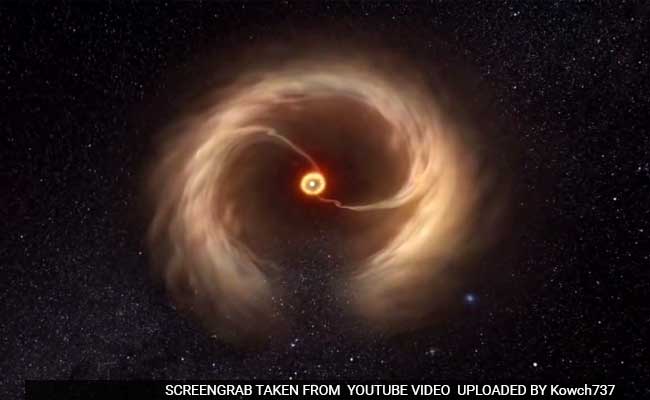
The HD 142527 system includes a first-rate famous person a bit more than twice the mass of our sunand a smaller associate superstar best approximately a 3rd the mass of our sun.the big apple: Throwingfresh insights into the planet-forming ability of a binary system, astronomers have taken a brand new,unique examine the very early tiers of planet formation around a binary big name.
Embedded in the outer reaches of a double superstar‘s protoplanetary disk, the researchers found a strikingcrescent-form region of dust this is conspicuously without gasoline.
For this, astronomers used the Atacama huge millimetre/submillimetre Array (ALMA) to observe the planet-forming disk round HD 142527, a binary megastar approximately 450 mild-years from Earth in a cluster ofyounger stars called the Scorpius-Centaurus affiliation.
The HD 142527 gadget consists of a first-rate star a bit greater than twice the mass of our sun and a smaller associate megastar simplest approximately a third the mass of our solar.
they’re separated through about a thousand million miles: a little more than the gap from the sun to Saturn.
“This binary machine has lengthy been regarded to harbour a planet-forming corona of dust and gas,” saidAndrea Isella, astronomer at Rice university in Houston, Texas.
“the brand new ALMA snap shots reveal previously unseen information about the bodily strategies thatadjust the formation of planets round this and perhaps many other binary systems,” Ms Isella introducedin a paper provided on the AAAS meeting in Washington DC this weekend.
the brand new, excessive–decision photographs of HD 142527 show a large elliptical ring across thedouble celebrity.
The disk starts offevolved highly far from the principal celebrity — approximately 50 times the sun-Earth distance.
This crescent-formed dust cloud can be the result of gravitational forces unique to binary stars and mayalso be the important thing to the formation of planets, Ms Isella speculated.
Its loss of loose-floating gases is possibly the end result of them freezing out and forming a skinny layer of ice at the dirt grains.
HD 142527 may be the issue of an upcoming paper led by means of Rice postdoctoral fellow Yann Boehlerwho is running in Isella’s group.
(This story has not been edited via NDTV group of workers and is vehicle-generated from a syndicated feed.)




